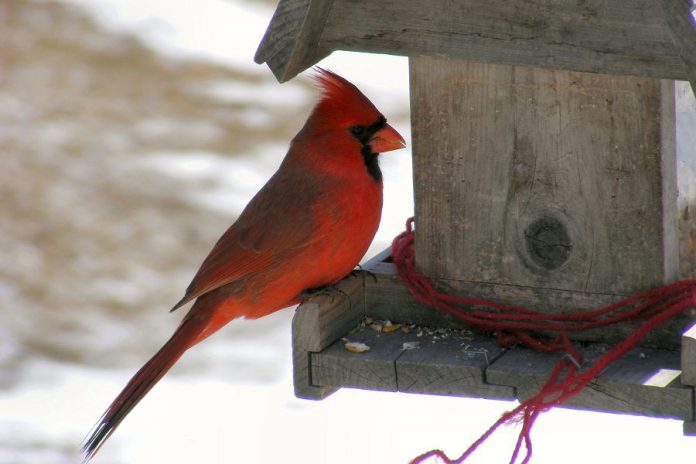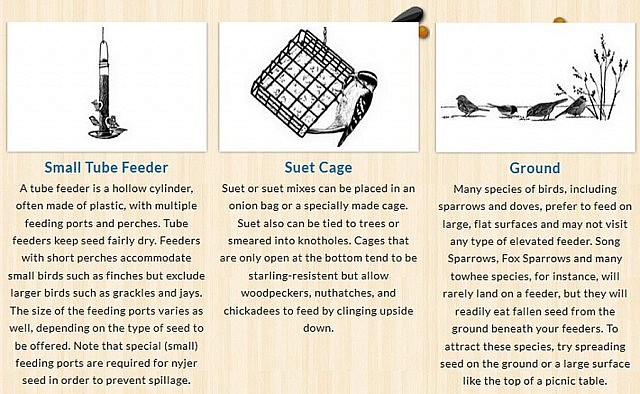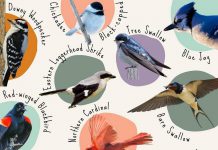
Last winter was especially difficult for birds and wildlife. The ice storm that affected parts of our region, coupled with extreme cold that lasted for weeks at a time, caused changes in wildlife — particularly bird behavior and migration.
Data obtained from Project Feederwatch, a citizen science program operated by Bird Studies Canada, showed certain species of birds were seen in large numbers much further south than usual, escaping the bitter cold and searching for reliable sources of food.
Last winter was a perfect example of why feeding our feathered friends during the winter months can be very important. When natural food sources become coated in ice or extreme cold breaks out, backyard bird feeders can be a vital lifeline, getting wild birds through very tough times.
Getting started with feeding birds is easy, but some planning is required when it comes to choosing the right seed and feeders.
The best kind of bird feeder is sturdy enough to withstand winter weather and visits from squirrels, able to keep the seeds inside dry, and easy to keep clean.
When choosing feeders, think about what types of birds you want to attract.
Hopper-style feeders appeal to a wide variety of birds including blue jays, cardinals, chickadees and more. Likely one of the mostly popular types, hopper feeders are widely available. Another popular type is a tube feeder, which contains several feeding ports running up the sides. Available in a wide range of sizes, tube feeders can feed anywhere from five to six to up to a dozen or more birds at one time. Depending on the size, a tube feeder will attract everything form chickadees and finches to blue jays.
Suet feeders are also very popular. Consisting of a plastic-coated metal basket (or even something as simple as an onion bag), suet attracts a wide variety of birds including woodpeckers, nuthatches, and chickadees. Suet is widely available in square blocks at most retailers.

Feeders should be set up in quiet places, close to shrubs or trees that can offer protection from predators and a place to rest between feeder visits. A close proximity to trees can allow squirrels easy access, but, generally speaking, 10 feet is enough of a buffer zone to keep squirrels at bay.
Once your feeders are installed and birds are coming on a regular basis, it’s important to maintain them above and beyond, ensuring they’re filled with seed. Regular cleaning is required to ensure diseases aren’t spread, making birds sick.
About once every two weeks, remove seed hulls and droppings and wash your feeders with hot soapy water. Make sure they’re dry before you re-fill with seed. Clean feeders help to ensure the birds in your backyard remain healthy.
It’s also a good idea to remove and clear away any uneaten seed or hulls that collect below feeders. Birds that consume seed that has spoiled could become sick. These seeds are also not good for pets and could possibly attract unwanted creatures like mice.
Speaking of seed, what is the best to offer? Sunflower seeds are a good place to start. Black oil sunflower seed is easy for most birds to open and a favorite among many species. Striped sunflower seeds are tougher to crack and some birds ignore them.
Ground-feeding birds like sparrows, juncos, and doves enjoy white millet. Cracked corn is favorite of blue jays. When it comes to buying seed mixes, avoid the low-cost varieties as they often contain a lot of filler, including red millet, which most birds won’t eat. Lower-cost bags of sunflower seeds can contain sticks and other debris to round out the bag weight. This filler ends up as waste at your feeder.
Believe it or not, there are bird species you want to avoid feeding. These species are already heavily subsidized by humans through habitat modification and agricultural practices and have very high population numbers. These include house sparrows, cowbirds, blackbirds, and starlings. Choose seeds and feeders these species dislike, depending on which of these species you encounter at your feeders.
For more information on feeding birds, visit the Cornell Lab or Ornithology’s website at www.allaboutbirds.org.


























